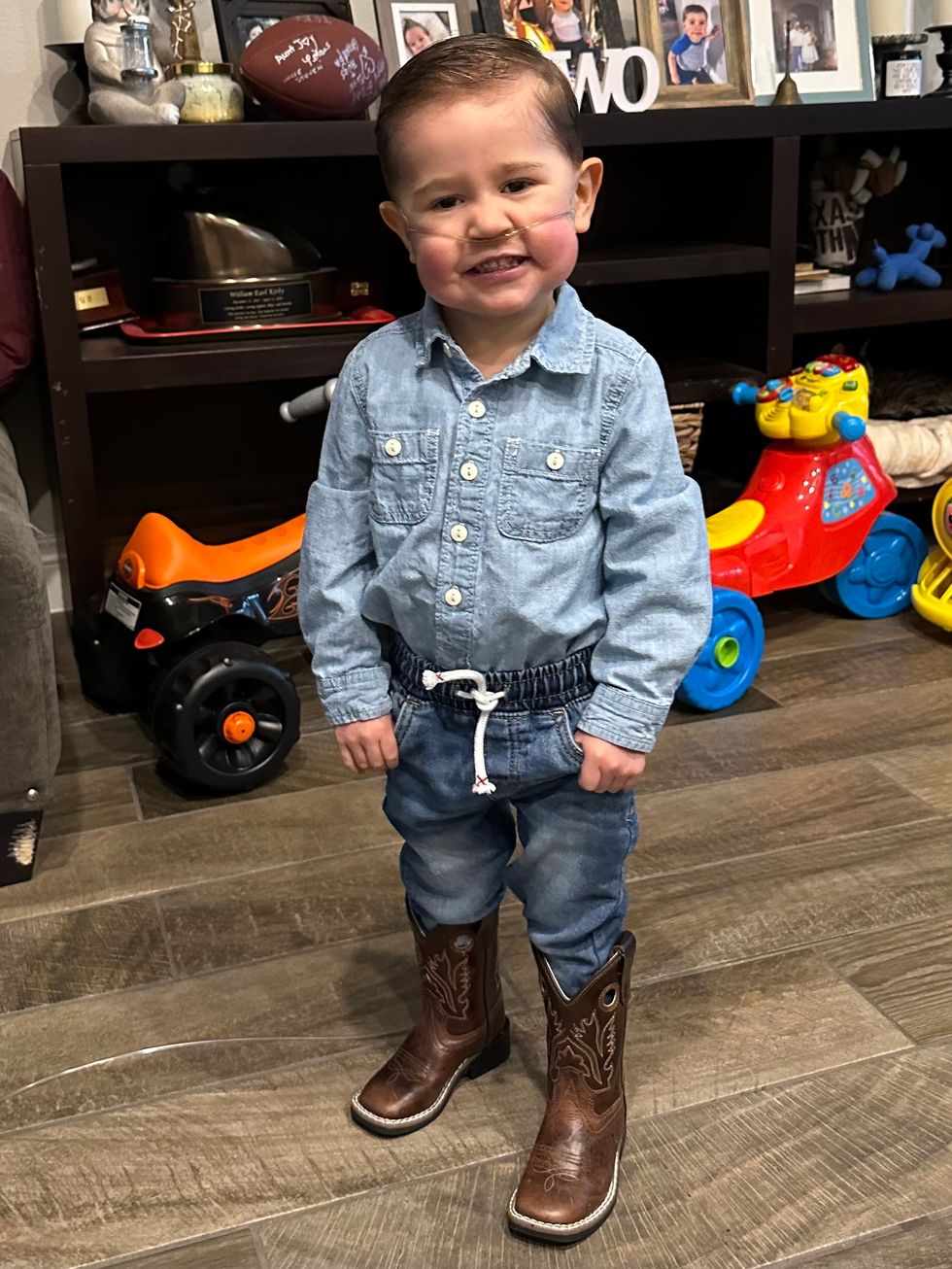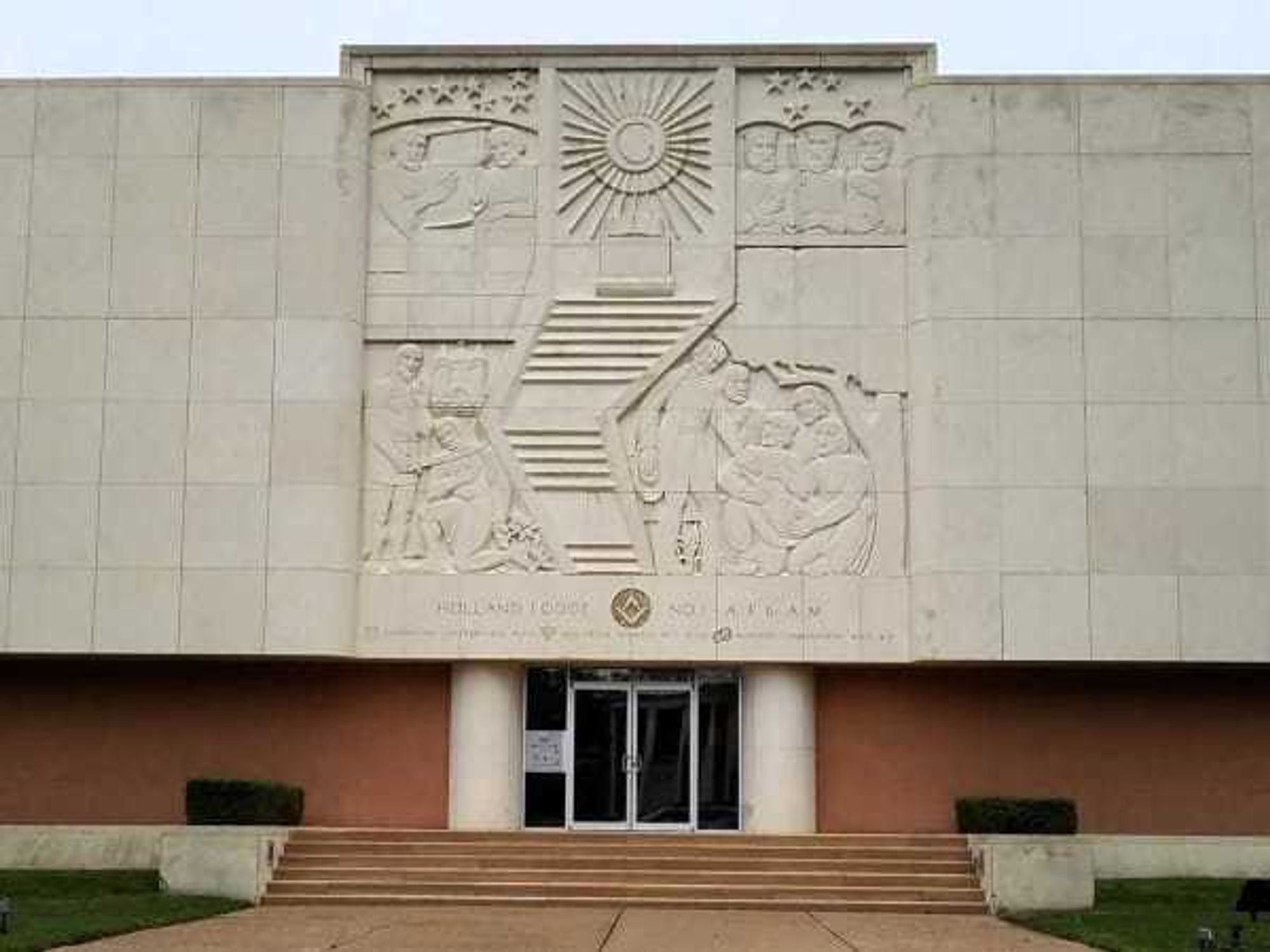William's Story
Baby William’s CDH & heart journey: A story of hope + resilience from Children’s Memorial Hermann Hospital

The Cervantes family: Stephanie, William, and Justin.
Justin and Stephanie Cervantes had always dreamed of becoming parents. Then, in June 2020, their long-awaited moment finally arrived when they discovered they were expecting. Excitement filled their hearts as they anticipated the arrival of their son, whom they decided to name William.
“We were so excited,” Stephanie recalls. “We couldn’t wait to be parents. As older parents, the thrill of expecting our child was also accompanied by a heightened awareness of potential risks.”
Stephanie began seeing her OB/GYN more regularly for ultrasounds. In the early stages of Stephanie's pregnancy, the couple opted for non-invasive prenatal testing (NIPT), a screening method assessing the risk of chromosomal abnormalities. The test is advised for women with a high risk due to factors like advanced maternal age or family history of genetic conditions.
“When we got the test back, everything came back normal,” says Stephanie. “We had nothing to be concerned about. We thought we were in the clear. Like nothing else could possibly go wrong.”
However, when Stephanie came in for her baby’s 20-week anatomy scan, unexpected challenges emerged. Despite the previous reassuring tests, William’s position during the ultrasound raised concerns. His heart appeared too far to the left and his stomach couldn’t be located. What initially seemed like a minor hiccup turned into a series of tests leading to a concerning health condition.
“The doctor told me, ‘We see a defect,'" says Stephanie. “But I was still in disbelief about everything. ‘What, really?' I was advised to call my husband and panic set in. Subsequently, William received a diagnosis of congenital diaphragmatic hernia (CDH), a condition characterized by a hole in the diaphragm, causing organs to move into the chest cavity. At that point, our doctor recommended that we go to Children’s Memorial Hermann Hospital. Our doctor assured me that if this were her baby, these were the people she would want to care for her child.”
An unexpected diagnosis
Stephanie underwent additional tests, including two fetal MRIs at The Fetal Center affiliated with Children's Memorial Hermann Hospital. The Fetal Center is an international referral center and an international leader in fetal diagnosis, fetal intervention, and comprehensive fetal care for infants with congenital anomalies or genetic abnormalities.
"We had to go through a whole new battery of tests upon our arrival," shares Stephanie. "They conducted numerous scans. William had right CDH, which is the rare version of the already rare disease, and a further fetal echocardiogram later revealed William had a heart defect which affected the left side of his heart.”
William was also diagnosed with Tetralogy of Fallot (TOF), a congenital heart condition consisting of four related heart defects that commonly occur together. While serious, these defects can be surgically repaired, offering a positive outlook for the majority of patients. During her pregnancy, Stephanie was under the care of her OB/GYN, Jerrie Refuerzo, MD, and Eric Bergh, MD, her maternal-fetal medicine specialist at The Fetal Center. Both closely monitored her pregnancy due to the severity of William’s conditions. Stephanie also saw a fetal cardiologist who had made the initial diagnosis.
"This entire situation was devastating for me," says Stephanie. "It was incredibly frightening. My husband is an eternal optimist. His positivity helped keep me above water. The doctors, including the surgeons who would perform our son’s CDH and heart surgery after he was born, remained optimistic. They would reassure me, saying, 'I know the numbers look scary, but this is our life’s work. Give this baby a chance.' We remained optimistic, determined to be the ones to break records and defy the odds. Our optimism and faith in our doctors became our driving force.”
William’s arrival
Stephanie tried to maintain a normal pregnancy despite the challenges ahead: “I still had my baby shower. I joined all of the CDH support groups. Everything was so up and down emotionally. But William kept doing really well on his scans.”
On Super Bowl Sunday 2021, Stephanie was admitted to the hospital. The nurses tried everything to help her dilate. “After 36 hours, I only dilated 5 to 6 centimeters in total. William started going into distress. So we had to do an emergency C-section, even though I wanted to go for a natural birth."
On February 9, 2021, Stephanie and Justin welcomed their son, William, at Children’s Memorial Hermann Hospital. At a delicate 4 pounds and 13 ounces, he made his entrance at 39 weeks’ gestation. To their concern, upon birth, William didn’t cry and appeared quite blue. The nurses immediately wrapped him up and transferred him to the Level IV NICU for further monitoring and observation.
“I got a chance to see William the next day,” says Stephanie. “He was hooked up to a ventilator. He was like Benjamin Button: a little old man with so much hair. I knew from that moment, with his upcoming surgeries, we were entering a challenging chapter. We held onto the confidence that the doctors could repair his organs, and our biggest hope was for him to go on and live a normal life.”
William’s surgeries
Affiliated pediatric surgeons Matthew Harting, MD, and Kuojen Tsao, MD, collaborated on William’s treatment plan. Two days after his birth, William underwent surgery to address his CDH. Dr. Tsao conducted the two-hour operation. “We made an incision in William’s abdomen, repositioned the abdominal organs that had herniated into the chest back into their normal position in the abdomen. We sutured the hole in his diaphragm and reinforced the repair using his own tissue,” says Dr. Tsao.
On April 23, 2021, when William was two months old, Christopher Greenleaf, MD, and Jorge Salazar, MD, both affiliated pediatric cardiothoracic surgeons, performed the open-heart procedure to repair William’s TOF. William had a combination of heart defects, including pulmonary artery narrowing, a ventricular septal defect (an opening in the wall between the right and left ventricles), and overriding aorta.

For CDH patients with a congenital heart defect, the affiliated team partners with the Children’s Heart Institute at Children’s Memorial Hermann Hospital to provide care for these complex cases. The Children’s Heart Institute offers innovative surgical and nonsurgical treatments for children and adults with congenital and pediatric-acquired heart disease. Together with affiliated physicians, the Children’s Heart Institute is ranked among the top congenital heart surgery programs in North America for patient care and outcomes, according to the Society of Thoracic Surgeons. This “CDH-plus” treatment provides access to a multidisciplinary team and the opportunity for more children to receive the comprehensive care they need that might be available elsewhere at the hospital.
“Individually, both CDH and TOF are considered very high-risk conditions, yet with proper treatment, patients can achieve favorable outcomes," says Dr. Harting. "However, when these two conditions coexist, the risk of death reaches a critical level. In contrast to many institutions, where such cases might be deemed untreatable, our philosophy here is rooted in the belief that every patient should be given a chance."

The affiliated team repaired William’s VSD by closing the hole in the septum with a patch to prevent the mixing of oxygenated and deoxygenated blood in the heart. The TOF surgery also involved replacing the conduit, ensuring proper blood flow from the right ventricle to the left pulmonary artery, and closing William’s patent ductus arteriosus (PDA). The PDA is a fetal blood vessel that usually closes shortly after birth. In some cases, it remains open (patent) and needs to be closed surgically. Surgeons used a clip to close the PDA to redirect blood flow to the normal pathway.
Between these two surgeries, William spent four months in the hospital: two months in the Children’s Memorial Hermann NICU and two months in the Pediatric Heart Intensive Care Unit. He was a heart warrior through it all.
Despite the challenges they faced from pregnancy to their son’s subsequent heart journey, the Cervantes are grateful to the specialized team of doctors and nurses who took care of William.
“The nurses and the doctors have been so wonderful,” says Stephanie. “I am still connected with many of them because they played a crucial role in raising my baby since he was in the hospital for a long time. The doctors always answered our questions but also provided support. Alongside his cardiology team, William’s team included affiliated neonatologists Amir Khan, MD and Suzanne Lopez, MD. Both doctors were actively involved in his care. It was fascinating to observe the dynamics between the two departments and see how their collaborative care seamlessly complemented our son’s well-being.”
William today
William, who celebrated his third birthday on February 9, 2024, is thriving. He sees Adriana Prada-Ruiz, MD, affiliated pediatric cardiologist, regularly to ensure his heart functions optimally. Additionally, Dr. Harting monitors William’s growth and development and addresses any potential issues that arise, such as pulmonary concerns, which is the primary concern for babies with CDH long-term.

Since his first open-heart procedure, William has undergone a balloon catheterization and two stents placed in his left pulmonary artery. On November 30, 2023, Dr. Greenleaf performed William’s second open-heart conduit replacement, allowing adjustments to be made as he grows. Throughout this journey, he remains an active and resilient toddler.
"William is a sports enthusiast," shares Stephanie. "He enjoys playing baseball, basketball, and kicking the ball. With a strong personality, he's assertive, especially with doctors. If he senses someone might mess with him, he'll say 'Ummm, no.' He's talkative, strong-minded, and loves pizza."
The Cervantes family attributes their strength during these challenging times to staying positive, maintaining faith in the medical team, researching, and supporting each other. Stephanie emphasizes, "William’s doctors instilled confidence in us, assuring everything would be okay. Their expertise in these surgeries gave us reassurance. Celebrating every little milestone, regardless of size, was significant. We appreciated the care in the NICU and CICU — the nurses, the staff — everyone was very kind and loved William. You could feel the genuine care they had for him."
---
Visit Children’s Heart Institute for more information. Learn more here about The Fetal Center affiliated with Children’s Memorial Hermann Hospital.
The Children’s Heart Institute is a collaboration between the affiliated physicians at McGovern Medical School at UTHealth Houston and Children’s Memorial Hermann Hospital. Typically, patients are seen on an outpatient basis at a UT Physicians clinic with all inpatient procedures performed at Children’s Memorial Hermann Hospital.

 The building at 4911 will be torn down for the new greenspace. Holland Lodge No. 1, A.F. & A.M./Facebook
The building at 4911 will be torn down for the new greenspace. Holland Lodge No. 1, A.F. & A.M./Facebook